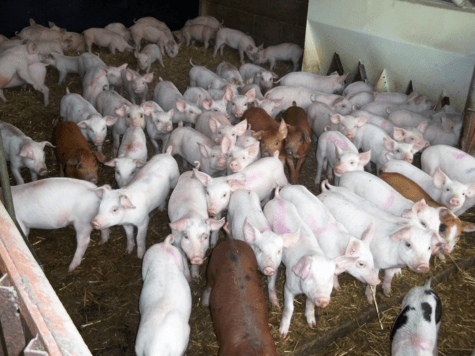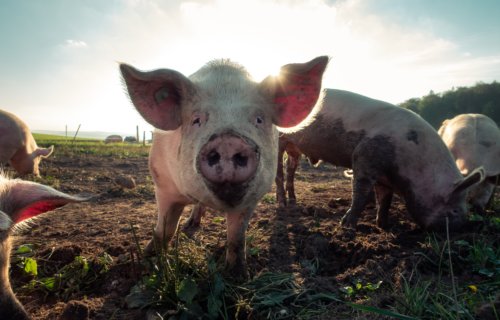CAMBRIDGE, United Kingdom — A highly antibiotic-resistant strain of the deadly superbug MRSA found in pigs can jump to humans, University of Cambridge scientists confirm.
The study authors believe this could be the result of decades of widespread antibiotic use in pig farming. In 2019, MRSA (methicillin resistant Staphylococcus aureus) killed around 100,000 people worldwide and the World Health Organization now considers it one of the world’s greatest threats to human health.
The bacterial strain found in pigs, CC398, has become the dominant type in European livestock in the last 50 years and is a growing cause of human MRSA infections. The study, published in the journal eLife, revealed that CC398 has now been detected in people with no link to livestock. More worryingly, it seems to be just as antibiotic-resistant in humans as it is in pigs — although it doesn’t cause disease in the animals.
Nearly all pigs on certain farms carry it now
MRSA was first identified in human patients in 1960. Due to its resistance to antibiotics, however, it is much harder to treat than other bacterial infections.
“Historically high levels of antibiotic use may have led to the evolution of this highly antibiotic resistant strain of MRSA on pig farms,” says lead author Dr. Gemma Murray, previously in Cambridge’s Department of Veterinary Medicine and now at the Wellcome Sanger Institute, in a university release.
“We found that the antibiotic resistance in this livestock-associated MRSA is extremely stable – it has persisted over several decades, and also as the bacteria has spread across different livestock species.”
Although the use of antibiotics on farms has dropped off in recent years, it is unlikely to affect this strain because it is so stable. CC398 is found across a wide variety of livestock but is associated mostly with pigs, especially in Danish pig farms where it has jumped from five-percent to 90-percent prevalence between 2008 and 2018.
“Understanding the emergence and success of CC398 in European livestock – and its capacity to infect humans – is vitally important in managing the risk it poses to public health,” says senior author Dr. Lucy Weinert.

What’s causing the bacteria to jump?
The team found that the bacteria can jump to humans due to mobile genetic elements in its genome. These are chunks of genetic material that give the MRSA certain characteristics, including its resistance to antibiotics and its ability to evade the human immune system.
Two particular mobile genetic elements that give it antibiotic resistance persist when CC398 jumps to humans, while a third appears and disappears in both pigs and people, showing it can rapidly adapt to humans.
“Cases of livestock-associated MRSA in humans are still only a small fraction of all MRSA cases in human populations, but the fact that they’re increasing is a worrying sign,” Dr. Weinart adds.
Intensification of farming, combined with high levels of antibiotic use in livestock, has led to particular concerns about livestock serving as reservoirs for antibiotic-resistant human infections.
South West News Service writer Jim Leffman contributed to this report.

